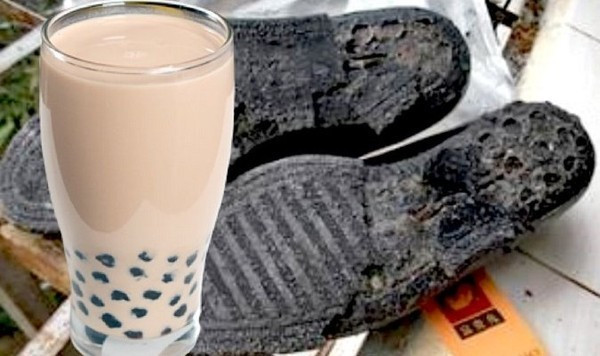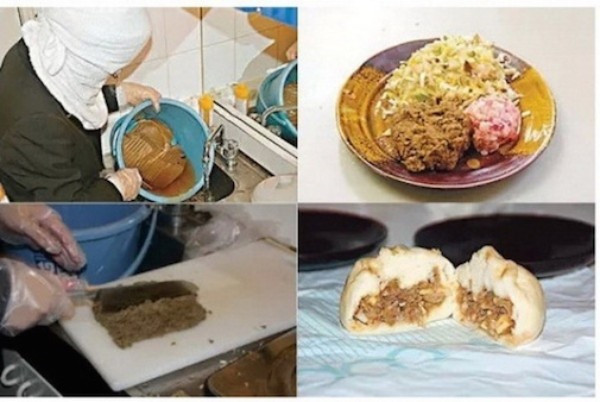Food safety has become an increasingly alarming issue in recent times. Beyond concerns about hygienic food processing, the reality of counterfeit food is causing widespread anxiety among consumers. Alarmingly, many food products, often originating from China, are being deceptively manufactured, making it incredibly difficult for the average person to discern the real from the fake. This issue is escalating, with increasingly sophisticated methods of food forgery emerging.
Rice Made from Plastic and Paper
Rice, a staple food for many Asian families, is something most people would assume is impossible to fake. However, in China, a type of “rice” made from plastic has surfaced. This counterfeit rice is produced using sweet potatoes, potatoes, and synthetic resins, molded into grains that perfectly mimic real rice. To complete the deception, manufacturers even add artificial rice flavoring.
Adding to the bizarre nature of food fraud, rice can even be made from paper. According to Shanghaiist, a family in Guangdong, China, experienced a shock when they found their cooked rice incredibly difficult to chew. Mrs. Cai, a family member, bit into a grain and was horrified to discover it was actually tightly rolled paper, disguised as rice.
 Fake rice made from paper and plastic in China, causing outrage among consumers.
Fake rice made from paper and plastic in China, causing outrage among consumers.
Tapioca Pearls from Old Tires and Shoe Soles
In another shocking revelation, Hong Kong Free Press reported on October 21st about the potential use of old tires and shoe soles in the production of tapioca pearls for bubble tea. A news report from Shandong Province, China, featured a journalist who drank bubble tea at a shop and then underwent a CT scan at a nearby hospital.
The CT scan revealed undigested tapioca pearls clumped together in the stomach, indicating they were not digestible. Subsequently, the journalist spoke with bubble tea shop owners, and one confessed, “All the tapioca pearls are made in chemical factories. To put it bluntly, they are made from old shoe soles and tires.”
 Bubble tea pearls recently accused of being made from old shoe soles and tires.
Bubble tea pearls recently accused of being made from old shoe soles and tires.
“Fake” Mineral Water from Tap Water
Water, essential for life, seems like another product immune to counterfeiting. Yet, in China, even bottled water is not safe from fraud. Fake bottled water, produced at incredibly low cost using tap water, is sold at normal prices, generating huge profits for unscrupulous manufacturers.
The water in these fake mineral water bottles is often simply tap water, lacking any safety or hygiene standards. It frequently contains harmful levels of E. coli bacteria, mold, and other contaminants, posing serious health risks to consumers.
Cardboard Dumplings: A Scandalous Filling
Dumplings (Baozi) are a traditional and popular food in China, consumed in vast quantities daily. It is perhaps unsurprising, then, that dumplings have also become a target for sophisticated food fraud. Unbelievably, the filling of some dumplings is being made from cardboard.
Cardboard is used as a dumpling filling ingredient in a shocking 6:4 ratio, meaning 60% cardboard and only 40% other ingredients like low-quality fatty meat. The cardboard pieces are soaked in a tub containing soda ash, a solvent used in the paper and detergent industries. Next, the softened cardboard is chopped and mixed with pork fat and seasonings.
This fraudulent mixture is then stuffed into dumpling wrappers, resembling normal dumplings, and sold widely in markets. The taste of these cardboard dumplings is reportedly unappetizing, with a hard texture, and they are primarily sold to low-income populations.
 Close-up of the process of making dumplings with cardboard filling.
Close-up of the process of making dumplings with cardboard filling.
Fake Cooking Oil from… Animal Carcasses
The raw materials used in this type of fake cooking oil are truly horrifying. This counterfeit cooking oil is derived from waste, sewer sludge from restaurants and hotels, and even deceased animal carcasses.
Initially, these waste materials are collected in troughs and large containers to be processed into dirty cooking oil. The production of this oil often occurs in unsanitary conditions, using contaminated equipment, teeming with bacteria.
 Horrifying process of making fake cooking oil in China from waste and animal carcasses.
Horrifying process of making fake cooking oil in China from waste and animal carcasses.
This fake cooking oil, even after processing, retains a brownish color, unlike clear, normal cooking oil. It is often sold to low-quality restaurants and cheap street food vendors, ultimately ending up in meals served to ordinary working-class people.
(According to Tri Thuc Tre)

